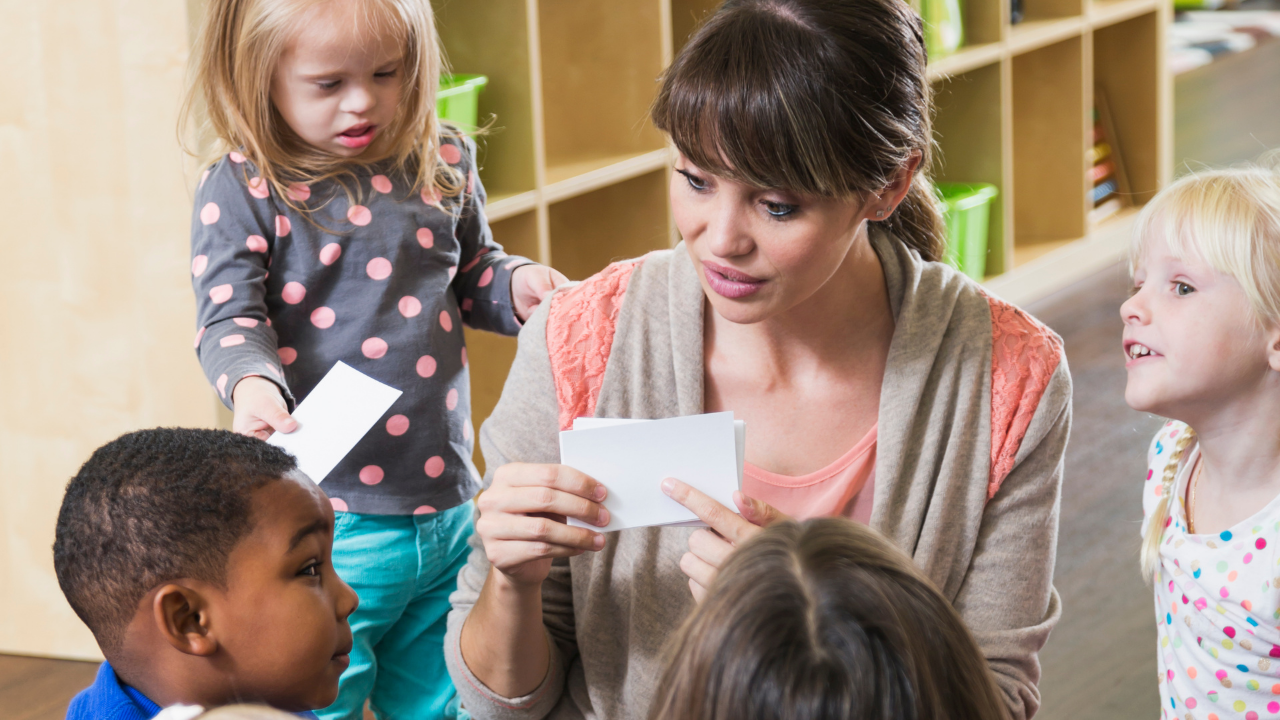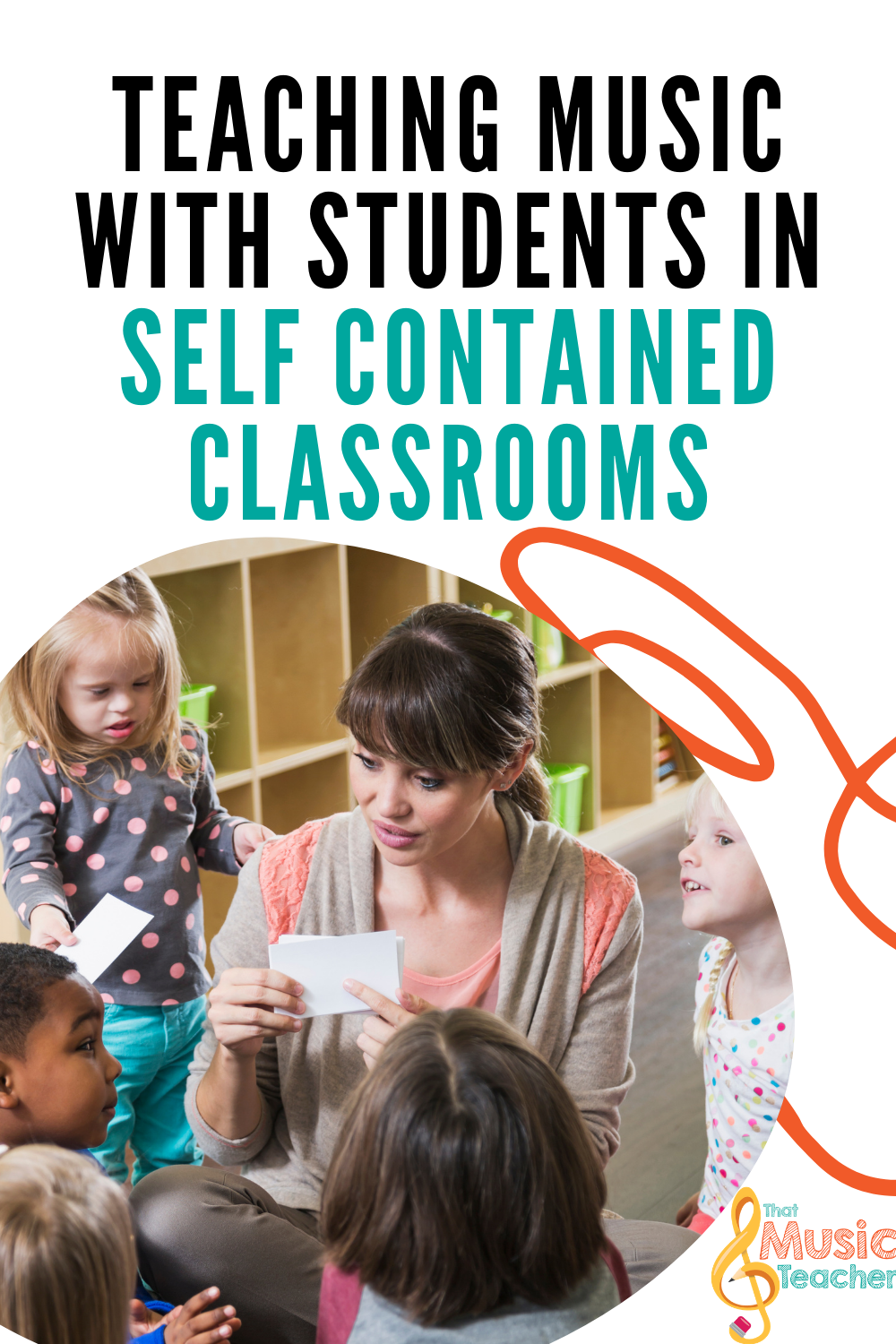
Music Classes with Self-Contained Classrooms
Nov 06, 2020
Have you ever encountered a situation where you stood back and said, “Woah, no one prepared me for this”? Well, many music teachers I have conversations with tell me this when they are told they have to teach music to self-contained classrooms.
Self-contained classrooms get a scary reputation, however, many teachers build these classrooms up in their heads. These students, just like all your other students, have the same basic needs, wants, and will have similar music goals as your other students.
Below I will outline a few key factors that are important to keep in mind when working with students in self-contained classrooms. Like all the students you teach, students in self-contained classrooms come from a variety of musical backgrounds and with a variety of musical interests. They may engage easily and readily with music, or, conversely, want nothing to do with music.
Do these traits sound familiar? They should, because all the students we service range from loving music to wanting nothing to do with it. That is what makes all our students unique and who they are.
1. Perspective Shift
To obtain a different perspective on the matter, I asked teachers who have self-contained classrooms their opinion on what they want their students to “get out of” general music class. Here were some of their thoughts:
-
Social/emotional learning
-
Building rapport with peers and teachers
-
Gaining independence
-
Follow directions
-
Exposure to something different that might interest them
-
Having Fun!
Now, as music educators, we may see this list and think, “Wow, there is not ONE music goal on this list.” However, I challenge you to see this list differently:
-
Aren’t we asking students to “follow directions” when asking them to sing and play a folk song with their peers?
-
Aren’t we exposing students to “something different that might interest them” when we read and play excerpts from Prokofiev’s “Peter and the Wolf”?
-
Aren’t we teaching students independence when helping them master solos on instruments or reading music notation?
-
Aren’t we always striving to build rapport with our students to further their connection to and investment in our teaching?
-
Aren’t we fostering socio-emotional learning when we connect songs and music to emotions?
-
And aren’t we always trying to foster a fun atmosphere in music? (We ARE the fun teachers, after all!)
Although the above learning outcomes may seem vastly different from the learning outcomes we think of when teaching music, they aren’t that different from one another. By teaching a love and appreciation for music, you are fostering socio-emotional skills and building rapport. You are working on goals of independence when teaching a student to master an instrument.
When working with students in self-contained classes, your overarching learning outcomes do not have to change much from your other classes. You can still foster a love of music, teach steady beat, and work on singing voice.
However, the way you go about approaching these goals may change, as well as including some flexibility in how you define these learning outcomes. Which brings us to…
2. Flexibility When Creating Learning Outcomes
I have a scenario to pose to you. If you were a track coach, and had student A and student B running a race, but student B had to start 30 seconds behind student A, would you put the same expectations on student B to win? I didn’t think so.
Now, let’s put this in the perspective of the music class. Would you ever expect a student with a disability to learn how to play “Hot Cross Buns,” on the recorder in the same amount of time as their grade-level peers? The answer should be no. Now, this isn’t to say that we should not expect much from our students with disabilities. This is absolutely not the case. Student B got a later start to the race, but that doesn’t mean that student B cannot finish the race.
The same applies to our students with disabilities. We need to pace our self-contained classes appropriately, and one of the ways to go about doing this is to work closely with their case manager or special education teacher when creating music learning outcomes.
This does not have to take more than one prep period of your time (and theirs!) to sit down and discuss learning goals for their students in music class. Ask to see the student’s IEPs, what their academic goals are, and go from there when creating and modifying your own lessons.
3. Access And Experience Over Outcome
Additionally, some of your music learning outcomes for self-contained classrooms may look very different from the outcomes for their grade-level peers. This is okay. Remember, students in self-contained classrooms have IEPs (Individualized Education Plans), and their education is highly individualized and differentiated.
Now, this does not mean you have to reinvent the wheel for each student with an IEP, but their music learning outcomes may look different from a student without an IEP in the same grade level. What the ultimate learning outcomes boil down to for students in self-contained classrooms relies on the individualized student, cooperation and brainstorming with their teacher, and your own critical thinking and decision making as a music educator.
Also, do not get caught up in the whole “students must learn steady beat/ti-ti/sol-mi by this date,” when working with students in self-contained settings. This is the MOST important factor when working with students in self-contained settings:
Access and experience for these students is the most important thing. It is more important than any outcome that you will set for these students.
Let me say that again: Access is more important than outcome.
That is not to say that outcome should not be stressed or a goal to reach for. Heck, I spoke at length about learning outcomes and goals for students in self-contained classrooms. However, the access to and experience in music education is more important than anything else for these students.
Special education law requires these students to have the same Free and Appropriate Public Education (FAPE) as their peers, so accessing the curriculum and having a positive experience in the music classroom is the most important aspect when working with these students. If they are accessing this component of their education, and enjoying themselves, you deserve to pat yourself on the back!
4. Advocate To Have Self-Contained Classrooms Push Into Their Typical Peer’s Classes
Unless you are instructed to otherwise do so, try to advocate to your administration the importance of having students in self-contained classrooms push into their typical peers’ music education classes. According to IDEA (the Individuals with Disabilities Act), students with disabilities should access their education in the Least Restrictive Environment (LRE).
This means, whenever possible, students should be in the least restrictive setting when accessing their education. For students in self-contained classrooms, their education is already restricted due to the fact that they are not around typical peers for the majority of their school day. However, students in self-contained classrooms gain so much value from interacting with their peers, and vice versa.
They can witness appropriate classroom behaviors, socialization, and exposure to curriculum that they may not receive otherwise. Benefits for typical peers working with students in self-contained classrooms are empathy, greater knowledge of others who may be different from them, and working with others who may be different from them.
Conclusion
With collaboration, critical thinking, and flexibility, teaching students in self-contained settings can become a challenge of the past. By incorporating some of the tips outlined in this article, you can be better prepared to successfully teach our exceptional learners the music lessons you want to teach them.
You can better prepare learning outcomes, and adapt and accept when these learning outcomes need to change at a moment's notice. Reminding ourselves that students in self-contained classrooms have emotions, experiences, likes and dislikes just like their typical peers may be the most difficult hurdle to get past.
Instead of building up self-contained classrooms in our heads, let’s break down these stigmas and remind ourselves what we already know: that these are just children, and we love to help and teach children music. That is what we do best.
Want to learn more? Grab my Top Five Tips For Helping Exceptional Learners to help you get started working with your exceptional learners!
This article was submitted by Lauren Marcinkowski, contributing author for ThatMusicTeacher.com. Interested in becoming a contributing author? Email resume and writing sample to [email protected].

Don't miss a beat!
New moves, motivation, and classes delivered to your inbox.
We hate SPAM. We will never sell your information, for any reason.

